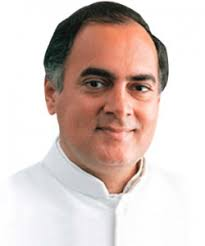India's development journey has many stories within stories - the layers after layers as they put in. The understanding of polity too is important. Indian voters like ambitious and result-oriented leaders but would not appreciate arrogance.
Post-2024 Lok Sabha campaign and the outcome of June 4th, the BJP leaders have understood that Indian voters despise all signs of arrogance in their elected leaders. USAID money could have influenced poll outcome but after the Modi Govt could come back to power -- creating history of course - there was a sense of relief.
Importantly, there was also a stern message - a sort of warning - by RSS chief Mohan Bhagwat. The 'change' in BJP activities is also visible. The saffron party has able to win Haryana, Maharashtra and Delhi.
The ousting of Arvind Kejriwal is a significant achievement because the victory in the national capital came after nearly three decades. Once upon a time Delhi was BJP's strong-point when the party was still trying to build organisations in states such as Assam.
Narendra Modi's BJP now rules 14 Indian states and its National Democratic Alliance (NDA) has control over 19 provinces.
The Union Territory of Jammu and Kashmir is in opposition kitty officially but is cooperating with the centre on major issues including the controversial abuse of EVMs.
Now comes the Development journey and here the West and South took early strides while the cow-belt north and the allegedly 'neglected' east lagged behind.
The Western and Southern Indian coasts gave benefits as the states could garner the initial leads from better connectivity to global markets and the industrial development.
East and Central 'suffered' due to a combination of factors including: limited access to trade routes, less industrialization, poorer infrastructure, geographical challenges, and even socio-economic disparities.
There were one or two other factors too. In West Bengal, the communists' culture with Bengali lethargy made people work shirkers. In states like Assam - the inherent Lahe-lahe ness (slow approach to everything) remained a guiding philosophy.
The 'Take it Easy' malady transformed into 'Na jane ho' kinds of problems in Nagaland. Insurgency in north eastern states taught people to hate-India and yet bank on easy-flowing Indian money for everything.
 |
| This animal is called Mithun :: Nagaland |
The 'national integration' did not happen and even in 2024-25, in Nagaland youths taking flights to Delhi or Kolkata say they are "going to India".
Then in fearing and hating outsiders became an ever lasting issue. In Gujarat, you will never find such an issue despite post-2002 propaganda in multiple quarters.
In Bihar and even in Odisha, the natural resources were never used properly for the developments of the two states and other eastern neighbours.
In Delhi, the Babudom and the political class -- the Neta-Babu combo - most often behaved as if Punjab was the end of the world.
During the height of terrorism in Punjab, three people killed in Gurdaspur would make headlines for All India Radio (AIR) bulletins but 100 people rendered homeless in Assam floods would be dismissed in one sentence of a bigger of rains.
The governance in India also has a lot to do with misplaced, motivated and mischievous claims.
Take this example :
In the late eighties the birth rate in Uttar Pradesh and some northern states was around 38-39 per 1000 for six years (from 1983 to 1988). This was five points higher than the national average.
It was around this time in a blatant paradoxical manner, Uttar Pradesh would always bag first or second prize for achieving ‘family planning targets’.
A thought process persisted even in the nineties that ‘sons’ are like old age pensions. In villages especially in the cow belt, it was believed that more children would mean more hands to earn.
Some years before these, a Babu in the southern state of Kerala got the name ‘Nirodh Kumar’. S Krishna Kumar’s issue or act of omission or commission was that during his stint as the district collector of Ernakulam in the early 1970s, the massive Nirodh campaign was taken up.
In fact, the name ‘Nirodh’ for the contraceptive was reportedly suggested by a student of Indian Institute of Management. The word in effect means ‘protection’.
Interestingly, the price was 0.25 paisa for each packet and it was found to be ‘expensive’ and later the price was brought down!
Of course, the bureaucrat later became a Minister under Rajiv Gandhi. Kumar also joined BJP in 2003, quit and returned to Congress and again in 2019 at the age of 80 came back to saffron party.
In his book ‘Head Count – Memoirs of a Demographer’, Ashish Bose later talked about the mid-eighties when officials and even minister(s) would mislead the then Prime Minister Rajiv Gandhi with ‘figures and achievements’ which were never there.
Bose, who had created the acronym BIMARU (precisely to denote Bihar, Madhya Pradesh, Rajasthan and Uttar Pradesh), even claimed that Rajiv Gandhi later transferred some officials out of the ministry.
Bose also claimed that around 1985 Rajiv had once thundered: “Why should not I abolish the Family Planning department?”
 |
| First post-independence born Indian PM |
The fact of the matter is unemployment and pervasive indebtedness in large parts of the country have been causes of deep concern.
Under the Modi government of course, technology has ensured the access of the targeted populace to their entitlements.
 |
| Train compartment as Cafe : Tinsukia, Assam |
Ends








No comments:
Post a Comment